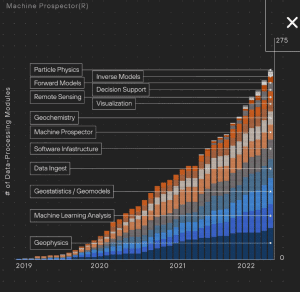Kobold Metals, a Berkeley, California-based startup, has raised $491 million out of its targeted $527 million funding round, as revealed in a recent regulatory filing. The company specializes in using artificial intelligence (AI) to discover new deposits of critical minerals like lithium and copper, which are essential for the global energy transition.
Kobold Metals is supported by a roster of high-profile backers, including billionaire investors Bill Gates, Jack Ma, and Jeff Bezos. In addition, prominent venture capital firms Andreessen Horowitz and T. Rowe Price co-led its previous funding round.
How Kobold Metals is Revolutionizing Mineral Exploration
Founded in 2018, Kobold Metals reached a valuation of $1 billion last year. According to The Wall Street Journal, the company aims to increase its valuation to $2 billion with the completion of the current funding round.
Once finalized, this will be one of the largest climate-tech capital raises of 2024, trailing only the $621 million Series E round by Ascend Elements, a company focused on renewable battery production, based on data from PitchBook.
The company has gained attention for its innovative use of machine learning and computer vision technologies to locate rare earth minerals. These minerals, particularly copper and lithium, are crucial for developing electric vehicles (EVs), renewable energy storage, and other technologies that are key to the global shift toward greener energy systems.
- By deploying AI, Kobold Metals aims to expedite the discovery of these resources, reducing the time and financial costs traditionally associated with mineral exploration.
Kobold Metals’ pursuit of battery metals started 3 years ago in northern Quebec, Canada, where the company detected lithium near Glencore’s Raglan nickel mine. Since then, Kobold has expanded its exploration to about a dozen properties across Zambia, Quebec, Saskatchewan, Ontario, and Western Australia.
These ventures are often formed through joint partnerships, including collaborations with BHP and BlueJay Mining to explore critical minerals in Greenland.
Kobold’s AI Maps the Future of Critical Minerals
The mining startup aims to build what it describes as a “Google Maps” of the planet’s underground mineral deposits. By leveraging AI, Kobold can collect and analyze various data streams — including historical drilling data, satellite images, and geological surveys — to identify areas with a high potential for new mineral discoveries. The AI applies algorithms to this data, identifying geological patterns that suggest the presence of minerals.

Kobold’s technology gives it a distinct edge, enabling it to locate resources that traditional geological methods might miss. This AI-driven approach helps the company pinpoint where mineral deposits are most likely to be found. It also aids miners in deciding which land to acquire and where to drill.
Despite the technological advances and strategic partnerships, the broader battery metals market has seen some turbulence. Lithium, a key component in electric vehicle batteries, experienced a two-year rally that peaked in 2022.
-
LITHIUM COMPANY SPOTLIGHT: The Fastest Developing North American Lithium Junior
However, the market has since collapsed due to an oversupply and slower-than-anticipated growth in battery demand. Rising interest rates have further dampened global EV sales, leading some automakers to scale back their production targets. According to Benchmark Mineral Intelligence, a consultancy firm, the lithium market is expected to remain in surplus until 2028.
One of the Silicon Valley firm’s primary goals is addressing this supply gap necessary to electrify transportation. The company projects that this gap, particularly for lithium, will reach a staggering $5 trillion.

Meeting this demand is critical to supporting the global shift toward electric vehicles and sustainable energy, as lithium is a key component in battery production. This underscores the urgent need for scaling up lithium mining and refining capabilities to accelerate the transition to a greener future.
In December last year, Kobold revealed intent to discover lithium in the U.S., Canada, Australia, Canada, and Africa.
From Lithium to Copper: The Race to Power the Global Energy Transition
Apart from lithium, a significant driver of Kobold’s growth has been its July 2024 announcement that its AI technology had successfully discovered a massive copper deposit in Zambia. This finding marks the largest copper discovery in over a decade. It then positioned the company as a pioneering force in modern mineral exploration.
Copper, in particular, is in high demand due to its critical role in electrical wiring and renewable energy infrastructure, such as wind turbines and solar panels.
With an estimated global demand for copper projected to reach 30 million metric tons by 2030, Kobold aims to efficiently locate high-potential copper deposits through advanced machine-learning techniques. As the EV market grows, the demand for copper is expected to increase significantly. Each electric vehicle requires about 80 kg of copper for wiring and components.
The timing of Kobold’s funding round comes amid increasing demand for raw materials essential for the energy transition. As governments and corporations worldwide push for decarbonization and renewable energy adoption, the need for materials like lithium and copper has soared.
According to industry experts, securing access to these resources is paramount to achieving climate goals, and companies like Kobold Metals are uniquely positioned to meet that demand.

